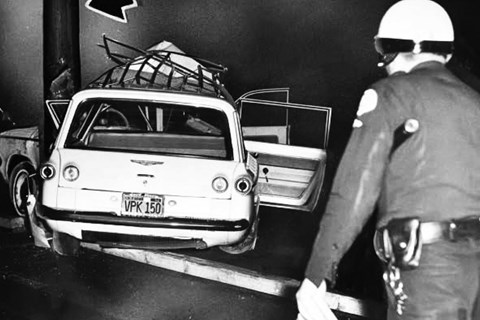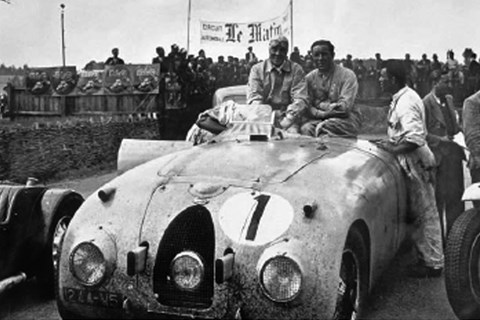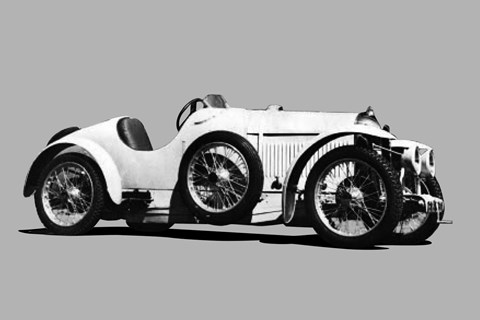► Excerpts from Stephen Bayley’s new book
► Titled Death Drive: there are no accidents
► On sale for £29.95
In a startling new book CAR’s Stephen Bayley explores the automobile’s role in a century of catastrophic legend-making.
‘Cars have a talismanic quality,’ says Bayley. ‘No other manufactured object has the same disturbing allure. More emotions are involved in cars than in anything else we make or use: vanity, cupidity, greed, aggression, social competitiveness, desire and fear.
‘But when all this mixed bag of perverse promise and certain threat ends in the catastrophe of a fatal collision, these same talismanic qualities acquire an extra dimension.
‘How the car crash has acquired cultural respectability, even glamour, is the subject of the book. It is not intended to be macabre, rather to survey how man’s most wonderful and most terrible everyday invention played its part in creating some of the enduring personal myths of the 20th century.’
The critically acclaimed book details 20 crashes, looking not just at the accidents but at the cars, the times, the consequences and the legacies. Here’s a taste:
James Dean, 1955, film star
Car: Porsche 550 RS Spyder (top)
Location: Cholame, California
Dean was only 24 when he paid $5790 for one of the few Spyders imported to the US, with the intention of towing it to races. But on 30 September 1955 he decided to acclimatise to the car by driving it from Hollywood to the Salinas races. At the junction of Route 466 and Route 41 near Cholame he collided head-on with a Ford Tudor saloon.
Bayley: ‘It was the first Porsche celebrity crash and contributed significantly to Porsche’s reputation for speed and metaphysical danger.’

Ernie Kovacs, 1962, comedian
Car Chevrolet Corvair
Location Santa Monica Boulevard, California
Ralph Nader’s Unsafe at any Speed, which nearly ruined General Motors, pilloried the handling of the Corvair. Its swing-axle rear suspension was prone to stepping out suddenly. Kovacs, a radical TV comic, was driving home from a party when he lost control and hit a telegraph pole.
Bayley: ‘What a nice irony that America’s most sophisticated comedian proved America’s flawed, but most sophisticated car to be a death trap.’

Mike Hawthorn, 1959, racing driver
Car Jaguar 3.4 Mk1
Location Hog’s Back, A3, Guildford
Hawthorn, who won the F1 world drivers’ title in 1958 wearing a bow-tie and driving a Ferrari 246, had never been seriously hurt in a race. But he died aged 29 in ‘an absurd motor accident’. He lost control of his Jaguar at 80mph on a notorious blind bend, glanced off a truck and hit a tree.
Bayley: ‘Just days earlier Hawthorn told a reporter “the roads are getting proper death traps. The racetrack is safer than the road between London and Farnham”.’

Jean Bugatti, 1939, car designer
Car: Bugatti 57C
Location: Alsace
Ettore Bugatti had forbidden his son Jean to race so he instead became committed to road testing and breaking speed records. On the night he died he had taken a Bugatti 57C to 235kph (146mph) on a country road. He’d smashed his 200kph target, but wanted one last run, on which he left the road and hit a tree.
Bayley: ‘Fred Duesenberg was the first celebrated carmaker to die in the crash of a car bearing his own name. Jean Bugatti was the second.’

Isadora Duncan, 1927, dancer
Car: Amilcar CGSS
Location: Nice
Duncan’s friend shouted a warning to look out for her long, trailing scarf, but within yards it had wound itself round one of the wheels…
Bayley: ‘Just like Isadora Duncan, the Amilcar company was also in perpetual financial trouble. It ceased trading in 1939.’
Read more from the June 2016 issue of CAR magazine